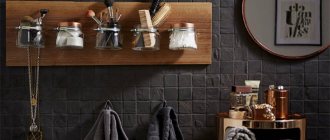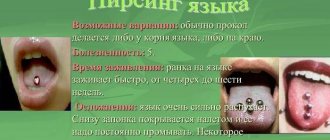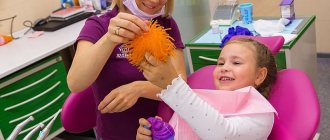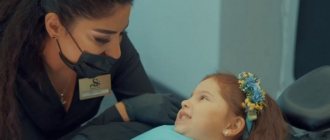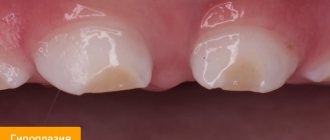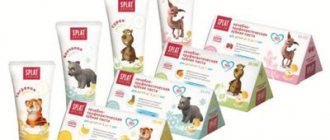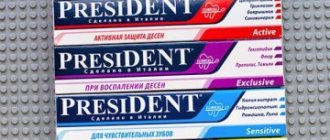Here you are for the first time holding your child’s hand, kissing his heels... This is a wonderful feeling! How we want to keep this feeling longer, because our children are growing so quickly. It seems that recently the baby grabbed his parent’s finger with his whole palm, but now this palm is already bigger than his mother’s!
A cast of our babies' hands and feet will help us regain that feeling of tenderness even after many years.
Fortunately for parents, there are now many options for making a memory impression. There are many craft kits in stores, and on the Internet there are many ways to do it yourself.
To get started, you need to prepare the most important thing - our model! Choose a moment when your baby is calm. If the baby's sleep is not very sensitive, you can do this while the child is sleeping. If your child is interested in cartoons, choose a moment when he is involved in watching. And, of course, make sure that the child is in a good mood and not hungry. Talk to him calmly and cheerfully, let him not worry about what strange manipulations his beloved mother is doing. If you are worried yourself, the excitement will be passed on to the baby.
This process should involve both of you as you create a real treasure for your future.
There are several ways to make your own impression. Let's look at the main ones.
This method is the fastest and is very easy to handle.
Colorful traces
The first thing that comes to mind to immortalize the hands and feet of a child is to dip them in watercolor or gouache and print them on plain paper or cardboard. Yes, this is not the most original method, but it is inexpensive and fast. To preserve this sheet for a long time, you can either laminate it or put it in a beautiful stretcher.
How to make a plaster hand yourself to make copies?
Having mastered the technology of casting and making molds, you can try to expand the range of products. A copied plaster hand, made with your own hands, can serve as a detail of the original composition.
For example, if cast in the position of holding an object, it can serve as a phone stand. In another case, it could be the base of a candlestick or table lamp. You can install a decorative glass in a plaster hand and this composition will turn into a pen holder or an original flower vase.
For mass copying, it is not practical to produce disposable forms. In this case, elastic silicone is better suited. Molds made from this material can be reused many times. To remove the casting, they are cut on one side and the copy is carefully removed.
The silicone is installed in the container in which it was poured during manufacture, and the process is repeated. To make it easier to remove castings, release agents can be used. In such molds you can pour not only plaster, but also paraffin, tin or chocolate. The authors' imagination is limitless - the main thing is not to be afraid to experiment!
Plasticine legs
Another simple option for making casts of children’s hands and feet with your own hands is plasticine. The best choice is one that hardens itself in the air, or a special mixture for modeling. The mass should be flattened into a medallion and the baby’s hand or foot should be well imprinted in it. Be sure to make a hole before the plasticine dries so that the “home heirloom” can be hung on a ribbon.
Pouring into the mold
A do-it-yourself plaster hand is made by casting into a prepared mold. The solution is added in portions. If you fill a complex form with it all at once, air pockets may form in it. The gypsum solution does not get into such voids; as a result, the finished model will have defects.
To avoid this, the mold is turned in all directions after pouring in the first small part of the working solution. So it spreads over the inner surface and gets into all the recesses. The air inside does not accumulate and is gradually displaced.
With the next portion, the gypsum solution is deposited on the walls more and more, its layer becomes thicker. Once the complex undercuts are completely filled, the remaining plaster can be poured.
Salt dough print
Many of us sculpted “salted” figures as children, and now, having become parents, salted dough will help us capture the tiny fingers of our babies. So, how to make casts of children's hands and feet from salt dough?
Dissolve half a glass of salt in a glass of water and add about a glass of flour (more is possible until the dough begins to stick to your hands). We divide the resulting mass into 4 equal parts and roll it out with a rolling pin into flat round pieces a couple of centimeters thick and the size of a child’s hand and foot. With the baby's dry, clean palms and feet, we press deeply onto each piece. If the cast is unclear or you don’t like it, you can roll the dough again and repeat the procedure.
When the cast is ready, let the dough dry for 2-3 weeks. After this, the dough can be painted with acrylic paints. As you can see, this method is quite painstaking, but the result will be durable and original casts of the child’s arms and legs made from salt dough.
Finishing
How to make a plaster cast of a hand into a finished composition? To do this, it needs to be painted. For some, the ideal option would be tinting with gold or bronze paint. Another will choose nude or white.
Acrylic emulsion is suitable for decorative coating, but its layer, although thin, can smooth out small lines and folds on the cast. Although, if the copy turned out to be imperfect, then this option is quite suitable. If you need to preserve the smallest details, it is better to use spray paint.
Before finishing, the cast is inspected, all irregularities are polished, and defects are corrected. In order for the paint to lay down in an even layer, the workpiece can be pre-primed, allowed to dry and then sanded again with fine sandpaper.
For installation, select a decorative base at your discretion and mount a copy of the hand or a composition with it on glue. After drying, the souvenir can be varnished for greater effect.
Salt dough and plaster cast
An even more meticulous and unusual way to get prints (casts) of children’s hands and feet with your own hands is to plaster them.
To do this, we make the dough according to the recipe described above, and form prints in the same way, and it is better to make 2 times more dough so that the print is as deep as possible (2-3 cm in depth). We take plaster (a creativity kit from special art stores for children is best, but a construction kit can also be used). We dilute it with water in the proportion of 1 cup of gypsum to half a glass of water (it is important to add water to the plaster, and not vice versa). Add 2-3 spoons of PVA glue to make the resulting cast stronger. Mix everything very quickly and pour it into the mold with the dough.
Before the mass hardens, it is better to wipe off all the unsightly edges with a cloth, otherwise you will have to file them off later, which could damage the shape. Let the cast of the child’s hand (foot) harden with your own hands for a day. Plaster usually dries quickly, but in order for everything to turn out well, it is better not to touch it for several hours. After which the finished cast can be removed from the dough. We sand all the unevenness with sandpaper. You can decorate such prints with acrylic paint or make an interesting collage of children's photographs with them. The main thing is to approach the process with imagination!
Making a plaster hand with your own hands
The technology for making a cast of a child's hand is slightly different from the work process with adults. The fact is that a child, as a rule, cannot keep his hand in a constant position until the molding mass grabs. Moving your fingers while molding ruins everything. Therefore, it is best to carry out this procedure during sleep in its deep phase.
Alginate molding compound is used. It is kneaded in a suitable sized bowl. All components are prepared in advance according to the instructions. Pour alginate powder into the water and stir it with a spoon until smooth for about one minute.
For adults, cold water is used. But to prevent the child from waking up from contact with the cool mass during sleep, it is better to warm it up. Warm water for mixing significantly reduces the time it takes to use the molding compound, so everything needs to be done quickly.
When the mixture is ready, it is poured into a suitable glass, selected according to the child’s hand, and his limb is placed there. The hardening time of the mass is 1-2 minutes. During this period, you need to keep the form at rest in order to get a high-quality print.
After the allotted time, the baby's hand is carefully removed. As a rule, this happens without problems, since the shape is plastic and does not deform under light load.
Immediately after this, the working solution is prepared and poured. Keep the plaster in the mold for no more than 30 minutes. Later, the alginate mass begins to release water, which will negatively affect the casting. The mold is removed from the glass, cut into pieces, and the child's plaster handprint is released. It is cleaned and left to dry.
The same principle is used to cast the hand of an adult or child, who can hold the hand at rest during molding.
Sand casts
Another way to make your own impressions of children's hands and feet is to use sand instead of dough. The operating principle is the same. Pour sand into a deep container, moisten it with water so that it turns into a thick mass, but does not float in the water and the child’s print does not spread. We lower the baby’s leg or arm deeper (1-2 cm) so that an imprint remains, and take it out. Then we lower the plaster into the resulting mold (the proportions are described above) and leave it for several hours to harden. Then shake off the excess sand.
Features of the technology
Gypsum powder should be stored in a dry place. Wetted or damp material is unsuitable for casting; it does not set. Its characteristics also deteriorate from long-term storage. The gypsum working solution is prepared quickly. Due to prolonged stirring, it “rejuvenates” and sets weaker, which ultimately leads to a loss of strength of the finished product.
If the working solution has hardened before pouring is complete, it is no longer suitable for use. Adding water and stirring it again will not correct the situation. Liquid glue can help slow down the setting of the solution. It (3-4 spoons per bucket of water) is added first and mixed well.
The casting must be dried at temperatures up to 60 degrees. It is not advisable to exceed this limit - the material loses strength and begins to decompose. A do-it-yourself plaster hand is made taking into account all these nuances. To make the finished product stronger, the solution is mixed with lime milk.
Moisture and dampness have a negative effect on gypsum products, so they must be used and stored indoors, especially if they do not have a protective coating.
Casts from the finished set
Here were several ways to make casts of children's hands and feet with your own hands, but you can also use ready-made kits for creativity. They allow you to create high-quality “handles” and “legs” without using improvised tools; you just need to follow the instructions. There are 2D sets (only with prints), 3D (full palm and foot), as well as with the possibility of making a cast of a child’s hand together with an adult hand, casts in a frame, on a stand, in an album, with an engraved plaque and much more. The only drawback of this method is the high cost, but those who really know a lot about original and memorable items will appreciate it.
Idea
For lovers, a plaster cast of a pair of hands clasped together can serve as a gift for a significant date. Often this composition is ordered by newlyweds on their wedding day.
Parents order casts of children's hands and feet as souvenirs in addition to photographs and videos of their children. Such a souvenir, decorated in an elegant frame, can be presented to family and friends as a memory of a memorable date: a first or anniversary birthday, baptism, a child’s first independent step, etc.
You can create a whole collection of such casts, made during different periods of active growth of the child. Later, holding them in their palms, children may remember the happy moments of their childhood.
An elegant plaster hand, made and decorated with your own hands, can also serve as a detail of an original composition. This decoration, for example, can also be used as a mannequin for storing rings.
Next stage
Next, you need to make impressions from plastic. To do this, a heavy piece of plastic that has already been worked out in your hands needs to be placed on top of the test base and carefully pressed through all the contours of the handle. The better the contact between the two layers, the more natural the craft will look. If the plastic is fresh or was stored strictly in a sealed bag, then working with the material is a pleasure. If there was access to air, you will have to work on it in advance. While the dough is drying, you need to knead the plastic in your hands every day so that it spreads a little.
Types of impressions
Impressions are divided into anatomical and functional. In the first case, the construction is manufactured without taking into account the characteristics of the tissues that are located on the border of removable dentures.
In the process of creating functional structures, medical instruments are used, selected in accordance with the individual characteristics of the patient.
Due to this, the mobility of the soft tissue folds located on the border of the implantation bed is reflected on the impression. A functional impression is indicated for patients who have lost all or part of their teeth.
Functional type products are classified into types:
- Compression. Used to take an impression of the lower jaw.
The products reflect the relief of the base of the prosthesis and allow you to redistribute the load during chewing over a larger area of its base. Due to this property, premature atrophy of bone structures is prevented. To make a compression print, materials with high viscosity values are used. - Unloading. The base of the prosthesis made from the unloading cast will have the shape of uncompressed mucous membranes.
This type of device is recommended for people whose professional activities involve speaking. The load during chewing will be distributed unevenly due to the mismatch between the relief of the bone tissue and the base of the prosthesis. - Combined. Necessary for creating devices that compress the pliable and unload the sedentary areas of the mucous membranes of the mouth located in the prosthesis area.
Thanks to differentiated impressions, implants are created that provide an even load during chewing or speaking.
What is “alginate powder for impressions”
The use of this powder can most often be seen in dentistry. Using alginate, dentists make impressions to model dental prostheses, as well as to clarify the patient’s bite.
The powder sets quickly. Its “lifetime” is about fifteen minutes. So from the moment the water touches the powder, you don't have much time to stir it and then have time to stick your hand in there to create an impression.
Alginate holds its shape well, so it is often used for making impressions not only in dentistry. You can dip your hand into the alginate only after you have mixed the substance with water until it becomes thick sour cream. It will turn pink and change to yellow as it hardens.
How to properly prepare for the casting process?
You can create a 3D plaster cast of your palm in standard home conditions. In this case, no additional technical devices are required.
All you need is to find suitable utensils, such as a gravy boat or a small saucepan. The main condition: that the entire palm with which you will make the impression can fit here. We also need a disposable container for preparing gypsum mortar. Silicone or enamel cookware is suitable. These utensils cannot be reused, so you must accept in advance that you will have to throw them away. However, if you intend to make impressions regularly, then it is better to purchase a special rubber plaster for mixing the working solution.



